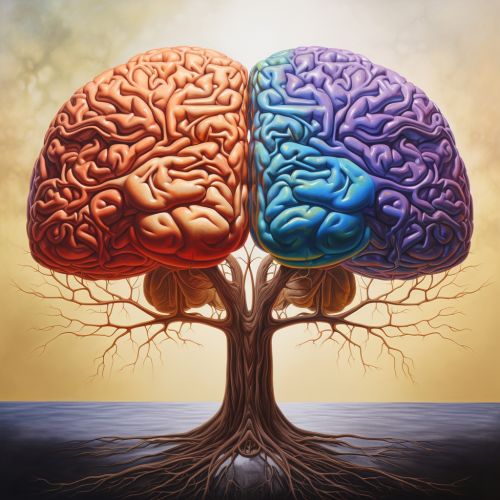Cerebral Lateralization and Cognitive Function
Introduction
Cerebral lateralization refers to the division of cognitive functions in the human brain, with each hemisphere specializing in different tasks. This concept is a fundamental aspect of neuroscience and psychology, and has been extensively studied to understand its implications on cognitive function.


History and Background
The concept of cerebral lateralization dates back to the 19th century, when physicians such as Paul Pierre Broca and Carl Ludwig Wernicke began to associate certain cognitive functions with specific areas of the brain. Their work laid the foundation for the understanding of brain lateralization and its role in cognitive function.
Hemispheric Specialization
The human brain is divided into two hemispheres, the left and the right, which are connected by a bundle of nerve fibers known as the corpus callosum. Each hemisphere is responsible for controlling the opposite side of the body, and also specializes in different cognitive tasks. This is known as hemispheric specialization.
Left Hemisphere
The left hemisphere is typically associated with logical thinking, language, and analytical abilities. It is involved in the control of language-related movement and in the processing of linguistic information. It is also responsible for tasks that involve logic, such as mathematical computations.
Right Hemisphere
The right hemisphere, on the other hand, is typically associated with spatial abilities, face recognition, visual imagery, music, and emotional processing. It is involved in the control of non-verbal movement and in the processing of non-linguistic information. It is also responsible for tasks that involve creativity and the arts.
Methods of Study
Various methods have been used to study cerebral lateralization, including lesion studies, split-brain patient studies, and neuroimaging techniques such as functional magnetic resonance imaging (fMRI) and positron emission tomography (PET).
Implications for Cognitive Function
Cerebral lateralization has significant implications for cognitive function. For example, damage to the left hemisphere of the brain can result in language deficits, known as aphasia, while damage to the right hemisphere can result in difficulties with spatial abilities, known as hemispatial neglect.
Controversies and Ongoing Research
Despite the extensive research on cerebral lateralization, there are still many controversies and unanswered questions. For example, while it is generally accepted that the left hemisphere is dominant for language in right-handed individuals, the extent of this dominance and its presence in left-handed individuals is still a topic of ongoing research.
